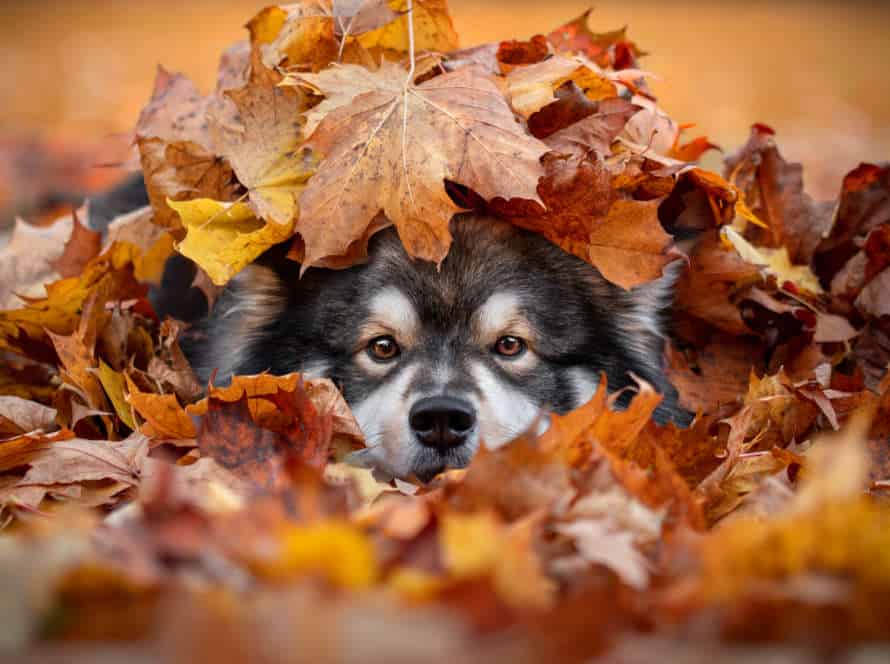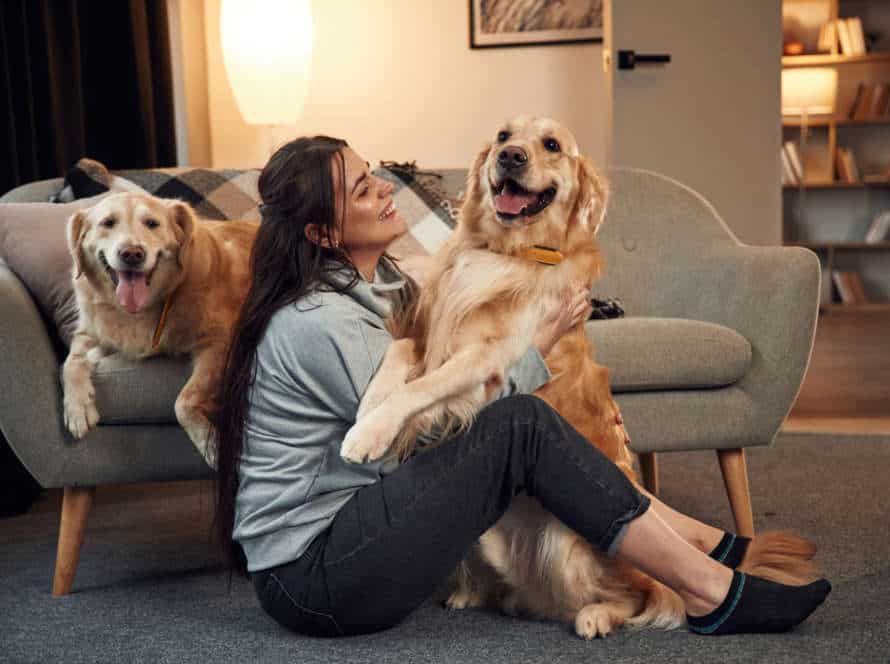Nipping Nuisance Barking in the Bud
Nuisance barking can really ruin your peace, and that of your neighbors. To prevent this behavior, here’s what to do:
- Figure out why your pup is barking. Is it fear, boredom, attention-seeking, or protecting their territory? Knowing the cause will help you tackle the problem.
- Give them enough exercise and mental stimulation. Boredom and excess energy can lead to barking. So make sure they stay active and engaged.
- Use positive reinforcement. Reward them when they remain quiet or stop barking on command. This will encourage good behavior.
- Get professional help. If it still persists, seek help from a dog trainer or behaviorist.
Pro tip: Never punish them for barking. Yelling at them can make it worse and affect your relationship.
Understanding the Causes of Nuisance Barking
Grasping the causes of nuisance barking can help us tackle it quickly. Dogs can bark for many reasons, like territoriality, tedium, fear, or lack of activity. Let’s take a closer look at some of the typical reasons why dogs bark and how we can resolve them.
Territorial Barking
Territorial barking is a common problem for canines. It can be due to anxiety, fear, or feeling threatened. Here are some tips for stopping it:
- Identify the trigger. Find out what makes your pup bark. Could be a sound or activity outside home causing fear, aggression, or worry.
- Training. Train your dog to obey commands like “quiet” or “no bark” with treats as a reward.
- Desensitization. Gently expose your pup to triggers like noises or people outside their territory. Reward calmness without barking.
- Exercise. Make sure your pooch is getting enough physical and mental exercise. This will help keep them calm and less likely to bark.
If severe, consult a pro trainer or vet for advice.
Alarm Barking
Alarm barking? That’s when your pup perceives a threat and wants to warn you. But it can become a nuisance! Here are common causes:
- Territorial protection
- Fear and anxiety
- Social isolation or boredom
- Medical issues
- Lack of exercise
To prevent it, you need to know what triggers the barking. Have fun with your pup, provide interactive toys, and reward good behaviour with treats and praise. No punishing though. If alarm barking continues, ask a pro for help.
Attention Seeking Barking
Attention-seeking barking in dogs is a common problem. It can be caused by boredom, lack of exercise, or lack of attention. Here are some tips to stop it:
- Identify what triggers the barking.
- Reward quiet behavior.
- Exercise, stimulate, and give attention to your dog.
- Use positive reinforcement training.
- If needed, get help from a professional.
- Be patient and consistent.
Pro tip: Give your dog interactive toys or puzzles to keep them occupied and stop boredom barking.
Basic Training Techniques to Stop Nuisance Barking
Nuisance barking is a bother to your neighbours and a source of stress for your pet. Luckily, there is a solution! Through the right training techniques, you can help your furry pal understand what type of barking is allowed. Let’s take a look at some basic training techniques to help prevent nuisance barking.
Teach Your Dog to ‘Speak’ and ‘Quiet’
Train your pup to “speak” and “quiet”! It’s a great way to stop nuisance barking and set boundaries with your pet. Here’s how:
- To Teach “Speak”:
- Make a noise that usually makes your dog bark, like the doorbell or “speak”.
- Reward him with a treat and praise him when he barks.
- Repeat until he barks on command.
- To Teach “Quiet”:
- Say “quiet” in a firm, but calm voice after he barks.
- Wait for him to be quiet for a few seconds.
- Treat and praise him.
- Do this again, gradually increasing the amount of time you wait for him to stay quiet.
Pro tip: Consistent practice is key. Don’t use punishment – it can have the opposite effect and hurt your dog’s confidence.
Encourage Your Dog to Bark on Command, then Silence
Train your pup to bark and then be quiet with this basic technique. It’ll stop the nuisance barking and stop the habit early!
Start by teaching your dog to bark when you say, “speak.” Give them a treat and praise when they do.
Next, tell them to be “quiet” or “silence.” When they obey, reward them with a treat and praise.
Train them in different situations with “speak” and “quiet” commands.
With practice and rewards, your pooch will learn to bark only when commanded and stop when you say “quiet!“
Train Your Dog Using Positive Reinforcement
Positive reinforcement is a humane way to train your dog. It can help stop nuisance barking. Here are tips for using positive reinforcement:
- Give treats, toys or praise when the dog is calm and quiet.
- Say “quiet” in a calm tone when the dog is barking. Reward them when they stop.
- Don’t punish the dog for barking. It can make it worse.
- Figure out why the dog is barking. Boredom or separation anxiety? Address that instead.
- Be consistent and patient. Positive reinforcement needs time and effort. It’s better than physical punishment or aggressive training.
Advanced Training Techniques to Stop Nuisance Barking
Excessive, nuisance barking can be a real hassle. Stressful for both owners and their neighbours. Thankfully, there are techniques to train your pup. In this article, we’ll go over advanced strategies to put a stop to this bad habit!
Teach Your Dog to Ignore Triggers
Teaching your pup to ignore triggers is essential in advanced training. Here’s how:
- Identify what makes your pup bark, such as a doorbell or visitor.
- Train ’em to obey the “quiet” command. Reward them when they stop barking.
- Create a positive connection with the trigger. Expose your pup to it gradually using desensitization.
- If your pup barks, use a “time-out” technique by removing them from the situation and putting them in a dull place for a few minutes.
- Be consistent with your training. Practice in different environments and situations.
- Never punish your pup for barking. Redirect their behavior to a positive one.
Distract Your Dog with Positive Activity
Distracting your pup with fun activities is a great way to stop their nuisance barking. Provide them with something that’s both enjoyable and rewarding. This will draw their focus away from the cause of their barking.
Here are some activities to try:
- Puzzle toys: Stimulate their minds by hiding treats or kibble inside these toys.
- Interactive play: Grab their favorite toy and play fetch or tug-of-war. This will help build a bond with them and tire them out.
- Training exercises: Teach them to sit, lie down, or even a new trick. This will redirect their energy.
These activities can help redirect their attention away from barking. Be patient, consistent, and your pup will learn it’s the right thing to do.
Teach Your Dog to Relax
Training your pooch to be chilled is vital. It can stop yappy barking and other unwanted habits. Here are some methods to teach your dog to relax:
- Give your pup a special spot for R&R: This could be a crate, a comfy bed, or a designated area in your home where your pup can be tranquil and feel secure.
- Do “sit” and “stay”: These orders can be useful for calming your dog in tense moments. Start with these commands when your pup is peaceful and up the distractions gradually.
- Use calm signs: Speak in a soft tone or play calming music to help your dog relax, specially in nerve-racking situations like thunderstorms or fireworks.
- Try massage and touch therapy: Giving your dog a massage or practicing touch therapy could assist them to stay serene and composed.
Be aware that training your dog to relax needs time and patience. By trying these techniques often, you can assist your pup to become more relaxed and prevent nuisance barking.
Using Bark Control Tools
Bark-controlling tools can help you: stop, control, or reduce your dog’s barking. Ultrasonic devices, remote-controlled collars, and bark collars are often successful in curbing barking habits. Before you purchase one, it’s wise to know the pros and cons.
Let’s review.
Ultrasonic Bark Control Devices
Ultrasonic bark control devices are a great way to stop nuisance barking. They use sound waves to deter dogs from excessive barking. Place the device near the area where your pup barks a lot, turn it on and wait for them to start barking. When they do, an unpleasant high-frequency sound will be emitted, causing them to stop. With consistent use, your pup will learn that barking leads to this sound, and eventually reduce their barking.
Pro tip: These devices are most effective when used with positive reinforcement training. Reward your pup with treats and praise when they stop barking.
Citronella Spray Bark Collars
Citronella spray bark collars are great for cutting nuisance barking at the root. These collars emit a harmless citronella scent when your pup barks too much, confusing and discouraging them. Unlike shock collars, citronella spray collars don’t cause pain or harm.
Here’s how they work:
- A small microphone on the collar detects excessive barking.
- Then, a burst of citronella scent is sprayed towards your pup’s face, stopping their barking.
- Over time, your pup will link excessive barking with the citronella spray.
Citronella spray collars help you train your pup to listen to your commands and cut their barking. Remember to use bark control tools responsibly and under supervision.
Pro Tip: Fit the collar correctly and replace the citronella spray cartridges regularly for best results.
Static Correction Anti-Bark Collars
Static correction anti-bark collars are an effective way to stop nuisance barking. They deliver a mild, harmless electric shock to your dog when they bark too much.
When using these collars, keep these points in mind:
- Choose the right one for your dog’s size and temperament.
- Follow the manufacturer’s instructions.
- Use the collar as a training tool, not a punishment.
- Positive reinforcement is key.
- Take the collar off when not in use.
- Monitor behavior to make sure it’s working.
- Adjust settings if needed.
Remember: anti-bark collars are not an alternative to proper training and socialization. You’re responsible for your dog’s behavior!
Dealing with Chronic Nuisance Barking
Nuisance barking can be a serious nuisance for pet owners and their neighbors. Therefore, it needs to be managed. Here’s a guide on how to do that. We’ll cover the causes of this behavior and the best approaches to reduce/stop it.
Identifying When It’s Time to Call in a Professional
Dealing with chronic barking can be tough. But, it is important to know when to get a pro to help. Signs you need help include:
- If your dog’s barking keeps getting worse, despite your attempts.
- If the barking affects your life negatively and causes distress, anxiety or arguments with your neighbours.
- If the barking is due to an underlying issue such as fear, aggression or anxiety.
A professional can work out the cause of the barking and create a plan. Don’t wait, address the problem early to prevent it from getting worse.
Pro Tip: Be consistent when dealing with barking. Everyone in the household must follow the same training plan.
Consult with a Veterinarian or Professional Dog Trainer
When it comes to chronic nuisance barking in dogs, consulting a vet or pro dog trainer is key. Here’s how they can help:
- Vet – Check for any medical issues causing your pup to bark too much. Your vet may suggest a health checkup and meds/dietary supplements. Plus, desensitization techniques to help your dog relax when barking is triggered.
- Pro Dog Trainer – They can make a custom training plan based on your dog’s breed, age, and temperament. Teach you commands/techniques to curb nuisance barking. Such as positive reinforcement, desensitization, and counter-conditioning.
Remember, dealing with nuisance barking needs patience, consistency, and lots of love & reinforcement. With the right help & training, you can stop the barking and have a peaceful environment with your furry friend.
Consider Medications or Therapy to Address Underlying Issues
Chronic nuisance barking is often a sign of a deeper problem. Meds or therapy may be needed to resolve it and stop the barking. If your dog’s barking still persists, consult your vet or a certified dog trainer.
Meds like anti-anxiety drugs or sedatives can be prescribed to tackle the source of the barking. Therapy may include working with a pro trainer to change your pup’s behavior using positive reinforcement, or addressing any fear or anxiety triggers.
Exercise, mental stimulation, and a safe, cozy environment can also help reduce the stress and anxiety. Don’t forget, it’s important to address the issue early to prevent it from becoming a habit.
Frequently Asked Questions
Q: Why does my dog bark excessively?
A: Dogs bark for many reasons, including boredom, anxiety, stress, attention-seeking behavior, or territorial guarding.
Q: How can I stop my dog from barking at everything?
A: Consistent training, positive reinforcement, and providing mental and physical stimulation for your dog can help reduce nuisance barking.
Q: Is it okay to use anti-bark collars or other training aids?
A: While some people might find success with anti-bark collars and other training aids, it’s best to consult with a professional dog trainer or behaviorist to determine the safest and most effective approach for your specific dog.
Q: Can I punish my dog for barking excessively?
A: Punishing your dog for barking can actually make the problem worse and damage the bond between you and your pet. Instead, focus on positive reinforcement training and addressing the underlying reason for the excessive barking.
Q: Should I seek professional help for my dog’s barking?
A: If your dog’s barking is causing significant disturbances or interfering with your daily life, it may be wise to consult with a professional dog trainer or behaviorist for additional guidance.







